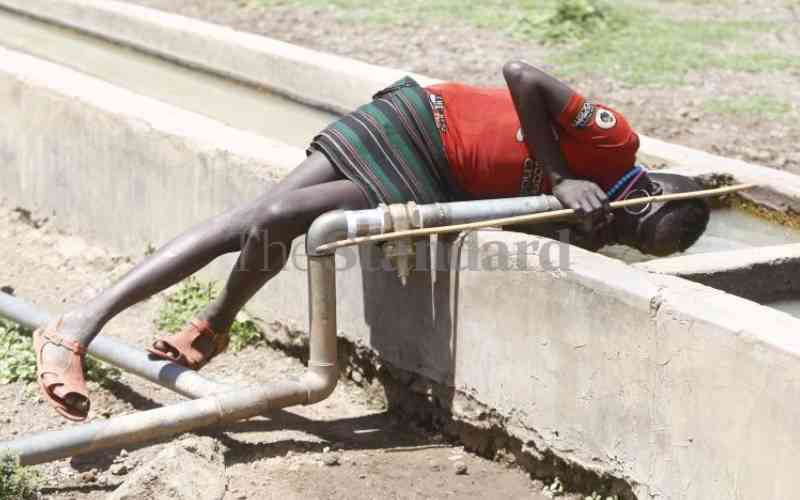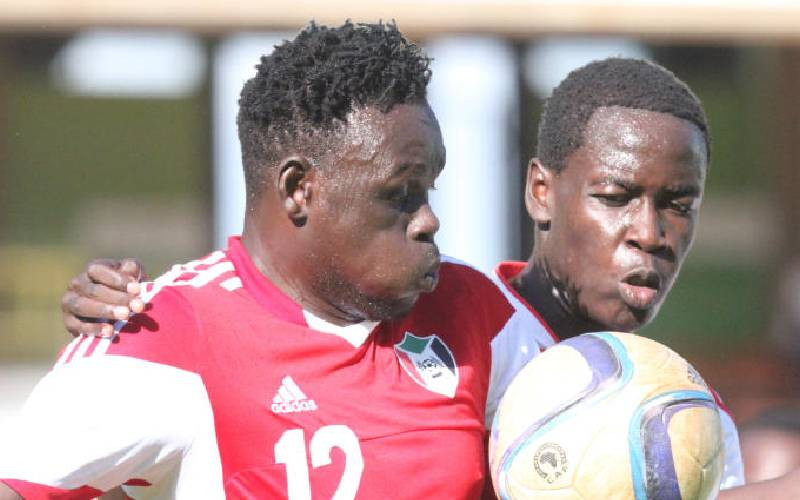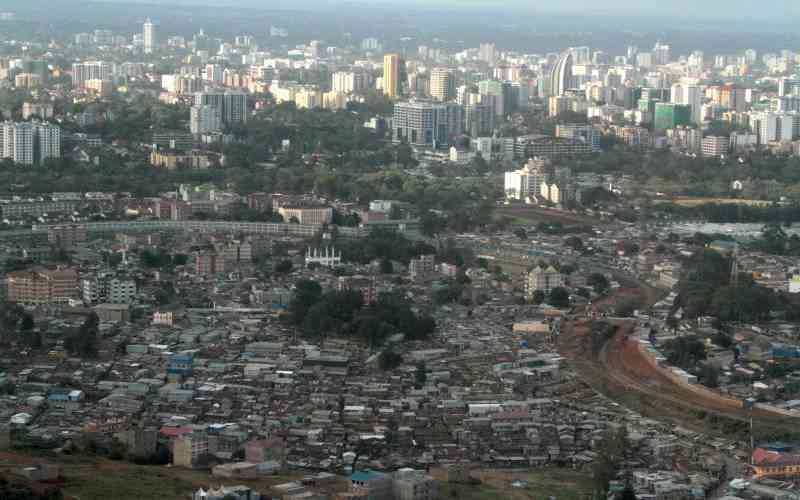
We continue from where we left last time. It doesn't matter how many high-level economic development meetings President William Ruto hosts and great deals he secures, or how hard his technocratic advisers or the actual Cabinet might be working behind the scenes if Kenyans are subjected to endless tirades and chest-thumping by his deputy Rigathi Gachagua. Unless, of course, Kenya Kwanza is facing difficulties in detailing and actioning the specifics in "The Plan". In other words, unless this is a deliberate scheme to divert our attention from more pressing issues.
And to be clear, this is a point that would have been made if the shoe was on the foot, and Azimio were the people in charge. Kenya has spent at least two generations claiming to be at "take-off" stage in the traditional economic development model once espoused by a fellow called Rostow.
Yet much of what we have heard over the past six months from the Kenya Kwanza brigade is plenty of moaning and groaning about the difficult situation they inherited; much of which is explained by external conditions and some of which is correctly about internal problems.
This is why the Riggy G lens on Kenya as a company is particularly troubling. Take our current drought situation (on which, ironically, he is leading the fundraising response) as an example.
The latest news from a February 24 presser by our Ministry of EAC, Asals and regional development tells us that six million people in 23 Asal counties (basically, half of our counties are arid or semi-arid) and nine non-Asal counties currently face acute food insecurity and/or malnutrition.
To quote the presser, "this includes 4.4 million people in the 23 Asal counties facing acute food insecurity and addition (sic) 0.5 million in 9 non-Asal counties, as well as 970,000 children below 5 years and 142,000 pregnant and breastfeeding mothers requiring urgent life-saving treatment for malnutrition".
If, as senators from Kenya's North-East have recently said, this isn't yet officially classified as a national disaster, then what is the threshold? Six million people today was 3.9 million people last July, but we were terribly busy with elections and covered it up, right?
- Community health workers boost counties universal healthcare bid
- Inside UON's digital health facility
- Cabinet okays NHIF scrapping if four bills get MPs nod
- Ruto to launch UHC on Mashujaa Day
Keep Reading
Back to that company lens. Remember those 2022 presidential vote numbers? Raila won six out of nine "political regions" in 2022, while Ruto won three (Mt Kenya, North and South Rift). Excluding diaspora which he won, Raila majored in 27 of our 47 counties, while Ruto won 20. But Ruto hit 25 per cent in 39 counties, which Raila did in 34. To repeat, breadth versus depth. A quiet question for Azimio is why these presidential majorities did not translate into governor and senatorial majorities, plus a national assembly majority that today runs on hire-purchase terms.
Now, superimpose this latest drought assessment on the data, and we see that 18 out of Raila's 27 counties are in dire straits, against 14 out of Ruto's 20 counties. Think also that this drought assessment leaves out 15 of the 47 counties, include the whole of Western, Kisii and much of the Rift and Central, as well as urban Nairobi, Mombasa and Kisumu. Taking this example as a whole, how do we justify this company argument? Before we talk about prayer as a substitute for policy.
It doesn't help that the presser quotes a prediction from the Igad Climate Prediction and Applications Centre (ICPAC) of below-normal rainfall in most parts of the Greater Horn of Africa during the March to May long rains season "which could worsen the severity of food insecurity in Kenya". If this is our company, then we have serious "going concern" questions at human level.
Which brings us to an interesting silver lining in Kenya's cloudy politics. Political correctness, public etiquette and good manners aside, this Riggy G lens helps us to think more about the real challenges facing Kenya as the nation, not Kenya as a corporate of "jobs for the boys and girls". Or Kenya as a perverse "loyalty gang-fest" that always decides on the "whom" before the "what". It should not be a surprise that our transactional politics is the fulcrum of our economic banditry.
To repeat from the previous column, true "bottom-up" thinking would build Kenya from our counties through our regional economic blocs to the overall picture. We broke down Sh9.8 trillion in economic activity (excluding indirect taxes) between the seven blocs as the picture of 2020. It's probably Sh13 trillion now.
We then threw up a stretch target that hits almost Sh28 trillion across these blocs as a picture of tomorrow (effectively national GDP pretty close to Sh30 trillion).
For the record, our Treasury number crunchers grow us from 14 trillion today to 23 trillion in 2027.
We hinted that the issue wasn't so much the cost of living (as bad as it is) but "pesa mfukoni" (money in our pockets). In other words, the "source of the Nile" search for a Kenya Kwanza agenda that focused on incomes, as its manifesto promises, including income support measures as needed.
If we recall from the manifesto, it was all about better and smarter value chains, as Vision 2030 demands. That's the public debate we currently need to be having, and it's not a short-term one.
I could stop this story here, but let's think more about this Kenya as a company notion with data gems for Kenya Kwanza's preference shareholders and Kenya's remaining majority at large.
We don't have the real time figures we should, so we use data from the 2022 County Fact Book by the Commission on Revenue Allocation, as well as the 2019 Population and Housing Census and the 2022 Gross County Product report on 2020. For illustrative purposes, we mix and match the data.
Let's start with 2020 per capita income across counties (again, excluding indirect taxes). It is striking that Raila's 27 counties accounted for 63 per cent of total county economic output, with Ruto's 20 counties representing the rest at 37 per cent. On a per capita basis - all numbers rounded, the 27 counties averaged monthly per capita incomes of Sh18,016 while the 20 comes out at Sh16,360 (national average was Sh17,367, a Sh30 trillion economy would top Sh50,000).
Before we scream "hustlers" in a crowded room, it gets more interesting when we look at agricultural and non-agricultural incomes. For the 27, the average was Sh3,004 (agriculture) and Sh15,011 (non-agriculture). For the 20, it reversed to Sh6,445 (agriculture) and Sh9,916 (non-agriculture). A million interpretations are possible here, but a big one might be "rural vs urban".
We go to poverty numbers. Last officially recorded at 36.1 per cent country-wide in 2015/16, there are calculations that show that it fell to 28 per cent by 2019, before jumping up to more than 40 per cent on account of Covid-19. So let's bravely assume we have recovered to 2015/16 levels. If we split this between Raila's 27 and Ruto's 20, then the absolute poverty headcount across the former's wins is 39 per cent, while it was at 31 per cent across the latter. Kenya Inc is interesting.
Especially when we get to the food poverty count where the tables dramatically turn. Almost half (49 per cent) in Ruto's 20 counties against 34 per cent in the 27 who voted Raila as president. I leave the data for reader interpretation, but we are still thinking about Kenya as a company. If we are smart, we might begin to see the beginnings of the national agenda in "bottom-up" thinking.
So let's conclude with some socio-economics. The data gets a bit weird here but the short story is that there was a higher population in the 20 than the 27 that was literate and has health insurance. As a quick point here before you ask about the data, the 27 counties represented 61 per cent of the population (not voters), and the 20 represented the rest (39 per cent). From an electoral viewpoint, however, remember the 25 per cent rule, and the Kenya Kwanza strategy to go deep before wide.
Which brings us finally to our households (whether they voted or not). The 27 counties represented 58 per cent of our households, the 20 added up to the remaining 42 per cent. But, guess what? At the margin, Ruto's 20 had better access to clean and safe water, improved sanitation and actual electricity than Raila's 27 (66 vs 64 per cent; 82 vs 80 per cent; 50 vs 49 per cent respectively).. To repeat again, we're not yet at solution sets, we're still on the notion of Kenya as a company.
Let's end at the beginning. Writing neither for Kenya Kwanza nor Azimio, we are six months into a new administration that needs to deliver (as commentators say, we're at 10 per cent). This is not the time for corporatized "truth or dare" in our troubling "House of Cards" context. There is much needed to realize our "win-win" economic take-off, and it is not about the dialectics of exclusion.
 The Standard Group Plc is a multi-media organization with investments in media platforms spanning newspaper print
operations, television, radio broadcasting, digital and online services. The Standard Group is recognized as a
leading multi-media house in Kenya with a key influence in matters of national and international interest.
The Standard Group Plc is a multi-media organization with investments in media platforms spanning newspaper print
operations, television, radio broadcasting, digital and online services. The Standard Group is recognized as a
leading multi-media house in Kenya with a key influence in matters of national and international interest.











